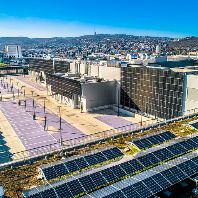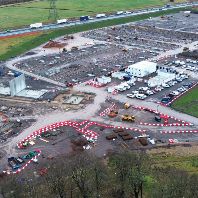Total return in Ireland, now positive for the third consecutive quarter, at 0.6%, outdid the 0.3% delivered by the UK commercial property sector (as recorded by the IPD UK Monthly Property Index) in the three months to June.
Nevertheless, and despite growing international investor attention, which saw some of the largest transactions in Dublin for the last four years, Irish real estate values continued to decline in Q2, by a further -1.8%, and have now fallen by a cumulative 66% since September 2007.
The unprecedented falls have made Irish property some of the most discounted in the world, and mean that income returns in Ireland are hard to beat, at over 10% on annual basis, though only if sustainable tenants can be found and it is this income return that is making Irish property again competitive.
Rental value falls have also continued to see a relative stabilization, falling by only 1.1% in Q2 after having declined by over 47% between September 08 and March 2012, according to the SCSI/IPD Ireland Quarterly Property Index.
Phil Tily, IPD Managing Director for the UK and Ireland, explained: "There have been a number of big name international lettings, particularly in the Dublin retail and office sectors, but the impacts of austerity cuts and the wider Eurozone crisis are still limiting occupier demand, which continues to push down values.
"The same external drivers are leading to guarded valuer sentiment. Yield expansion was minimal, but continues to have a negative impact on market values.
"In relation to property performance in the UK, it's more reflective of the UK market really suffering, rather than any outstanding performance in Ireland."
Roland O'Connell, President of the Society of Chartered Surveyors Ireland, continued, "Investor confidence, availability of finance and availability of the right type of product are still the main issues in the market. An increase in sales during 2012, including such properties as the Alliance Building and Riverside II, demonstrated that there are buyers for better quality buildings, and that investor confidence is improving, though availability of finance will remain a brake on the market for the immediate future.
"Ireland is continuing to attract FDI investment which is creating new jobs and in turn demand for office and industrial space. The recent placing of Ireland as number 1 in the world for skilled labor in the 2012 IMD World Competitiveness Yearbook is another indicator of our attractiveness as a location for international investment.
"Though the Irish market remains over supplied in all sectors, there are distinct signs that we will shortly face a shortage of large prime city center offices in Dublin, while we will continue to have an oversupply of secondary product. Consequently the gap between demand and rents for the best prime property and secondary product could widen further."
Sector breakdown
The hard hit retail sector saw the only negative returns in Q2, at -0.1%, having experienced a more notable rate of capital declines at -2.2%, compared with 1.5% capital reductions in both the office and industrial markets.
In terms of rental declines, the retail and industrial sectors were the worst affected, at -1.5%. The fall in office rental values by comparison, slowed to only 0.7%.
Tily continued, "Income yields across the three sectors are now extremely competitive, with industrial assets offering 11.5% and the office sector 10.6%. Obviously investors will be taking on a considerable degree of risk by investing in such properties, but for the third consecutive quarter overall returns have now been positive, while rental and capital declines have been considerably less severe implying a degree of stability is returning to the market.
"However, it should be noted that reversionary yields are only 6.6% overall, as a considerable portion of leases were signed at the top of the market. When these expire, income on a number of properties will fall considerably, back to market levels, and this will impact on fu















